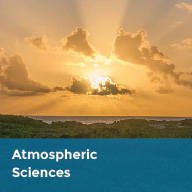Several SOEST researchers and faculty members are quoted in a recent Hawaii Business Magazine article about the economic impacts of climate change in Hawai‘i:
Out of 27 extreme weather events in 2016, researchers for the American Meteorological Society have correlated 21 of them to human-caused climate change. “The probability of these intense rainfall events increases as the atmosphere grows warmer,” says Chip Fletcher, vice chair of the Honolulu Climate Change Commission, professor of Geology and Geophysics, and SOEST Associate Dean for Academic Affairs. “These rainfall events are weather. Climate change doesn’t cause weather. But climate change does cause these weather events to grow in severity and therefore cause more damage. We’re confident in saying that the magnitude of events that took place in Hawai‘i this past spring are consistent with what climate change is going to continue to bring to the state.”
It is hard to be nonchalant about the future of our coasts after playing around with the Pacific Islands Ocean Observing System (PacIOOS) Hawaii Sea Level Rise Viewer. An online resource, it visually illustrates what areas of the state will be affected as warming temperatures and the melting of ice sheets and glaciers increase the volume of the ocean.
Because of Waikīkī’s role in Hawai‘i’s economy, some of the proposed strategies to protect it are beyond what might be recommended elsewhere. “Some of the things we’re talking about are things from an environmental standpoint we wouldn’t necessarily want to do in, say, a rural setting like Kailua. But Waikīkī is different. It’s important to invest in the future of Waikīkī. What the nature of that investment is, is up for discussion,” says Dolan Eversole, Waikīkī Beach management coordinator for the UH Sea Grant Program.
Rosie Alegado, an assistant professor of Oceanography and director of the UH Sea Grant Program Center for Integrated Science, Knowledge, and Culture, has been reading through newspaper articles dating back to 1834 written in Hawaiian mostly by Hawaiians. She finds accounts of how people throughout Hawaii’s history expressed the value of the natural environment, and what they feared could be lost.
“At its simplest terms, it’s about well-being, which is a very intangible concept. Well-being from the point of view of ‘Can I catch enough fish? Do we have enough resources to build my house in a traditional way? Can I continue to get everything I need for my child’s birthday or wedding? Can I go to the same places my parents went to and do the same things? Can we continue to live life the way we always have?’ ” says Alegado.
Read more about their comments, and about current and future impacts of climate change on the people of Hawai‘i, at Hawaii Business Magazine.












